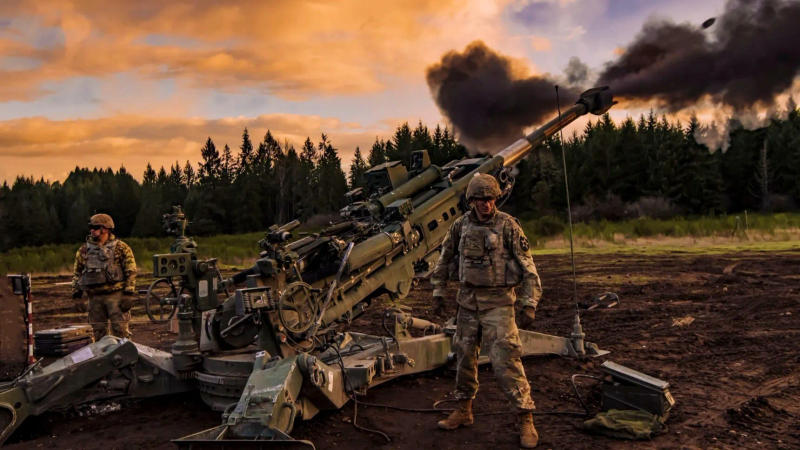Published 18:55 IST, December 24th 2023
U.S. Army's PrSM and hypersonic weapons to transform long-range precision fires
The US Army advances its long-range precision fires with the imminent deployment of the Precision Strike Missile (PrSM), featuring a range of 300 miles.

Breaking new ground in military capabilities, the U.S. Army is gearing up to deploy two state-of-the-art missile systems in the hands of its soldiers by 2024. This strategic move addresses critical distance challenges within the ambit of the Army's extensive long-range precision fires modernization program. One of these advancements, the Precision Strike Missile (PrSM), boasts an impressive range of up to 300 miles, eclipsing its predecessor, the Army Tactical Missile System (ATACMS), which maxes out at approximately 190 miles. This leap forward is a result of the ongoing collaboration with Raytheon initiated in February 2023 under the system’s Increment 4 development.
To bolster the Army's agility and extend its operational reach against formidable adversaries such as Russia and China, the service is pioneering an innovative technology—the Long Range Hypersonic Weapon. Once deployed, this hypersonic missile is poised to achieve ranges of up to 1,725 miles, as outlined in a 2023 Congressional Research Service report.
Triumph in PrSM testing signals early operational capability
The PrSM recently achieved a significant milestone by completing a successful production qualification test. Launched from a High Mobility Artillery Rocket System on Nov. 13 at White Sands Missile Range, the test evaluated the projectile's flight trajectory, lethality, near-vertical engagement angle, and height of burst. This triumph propels the PrSM to the status of "early operational capability," paving the way for soldiers to commence operational use in 2024.

In contrast, the journey of developing the Long Range Hypersonic Weapon has encountered more intricate challenges. Surpassing Mach 5 (3,836 miles per hour) and maneuvering at various altitudes are formidable hurdles. The first hypersonic weapon prototype was delivered to the 5th Battalion, 3rd Field Artillery Regiment, 17th Field Artillery Brigade, I Corps at Joint Base Lewis-McChord, Washington, in fiscal year 2021. This early increment included essential components such as the battery operations center, transporter-erector launchers, and modified transport vehicles.
Delays in common hypersonic glide body development
However, the development of the Common Hypersonic Glide Body (C-HGB), encompassing the weapon's warhead, guidance system, cabling, and thermal protection shield, has faced delays following a canceled test in September. Consequently, the system is now anticipated to be fielded in 2024, shifting from its originally planned late 2023 deployment.
Despite the challenges, Army Undersecretary Gabe Camarillo expressed unwavering confidence in the program's overall progress. While specific details regarding the canceled test were not disclosed, Camarillo assured that the development was proceeding positively.
These cutting-edge missile systems play a pivotal role in the Army's recently established Multi-Domain Task Forces and the Strategic Mid-Range Fires battery. The overarching plan involves deploying a Strategic Mid-Range Fires battery within the Strategic Fires Battalion, all coordinated by the Multi-Domain Task Forces. Commencing in 2018, the formation of these task forces has unfolded strategically, with the 1st MDTF in the U.S. Indo-Pacific Command, followed by the 2nd MDTF in Europe in 2021, and the 3rd MDTF in the Pacific in 2022, culminating in their first full operational exercise in 2023.
Updated 18:55 IST, December 24th 2023




